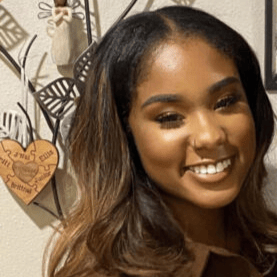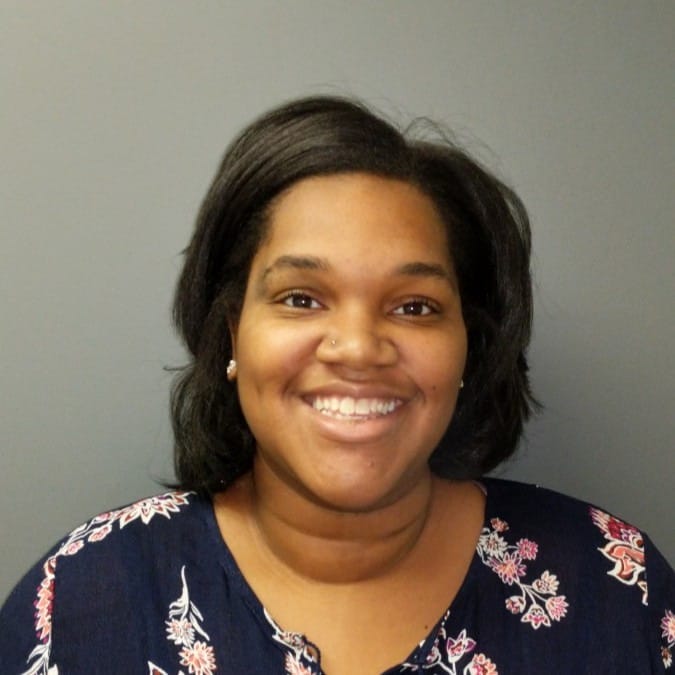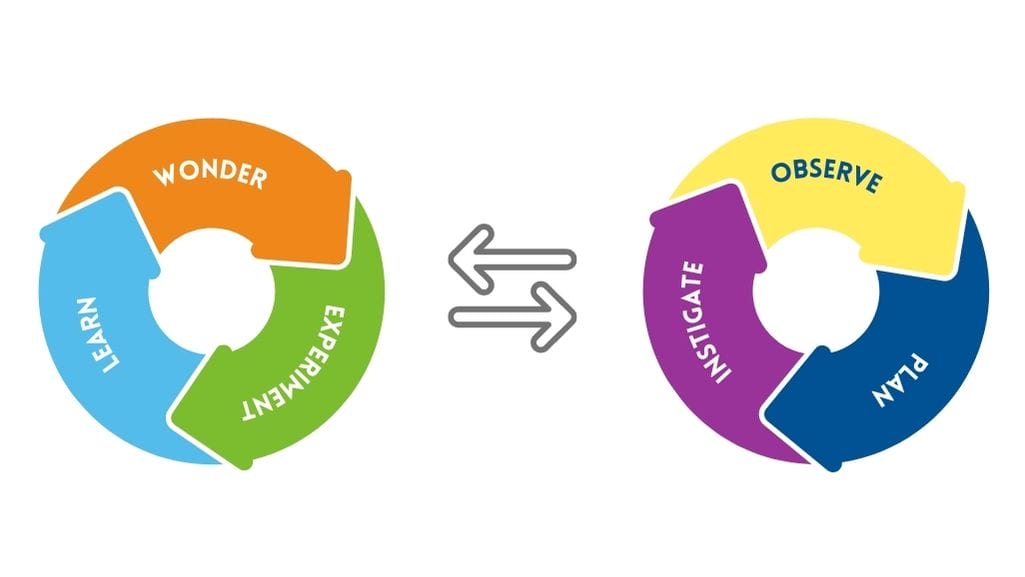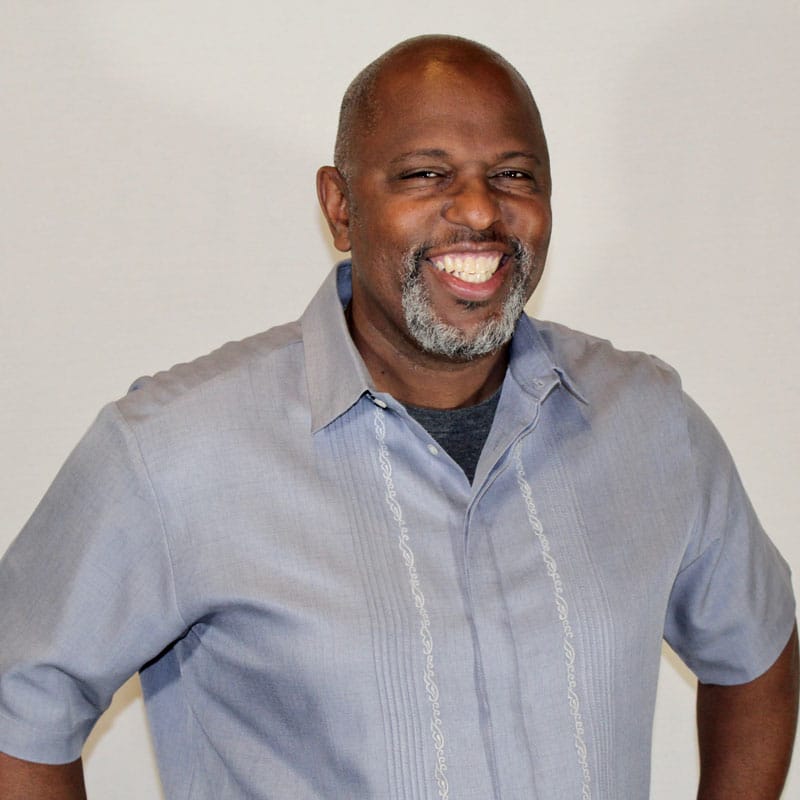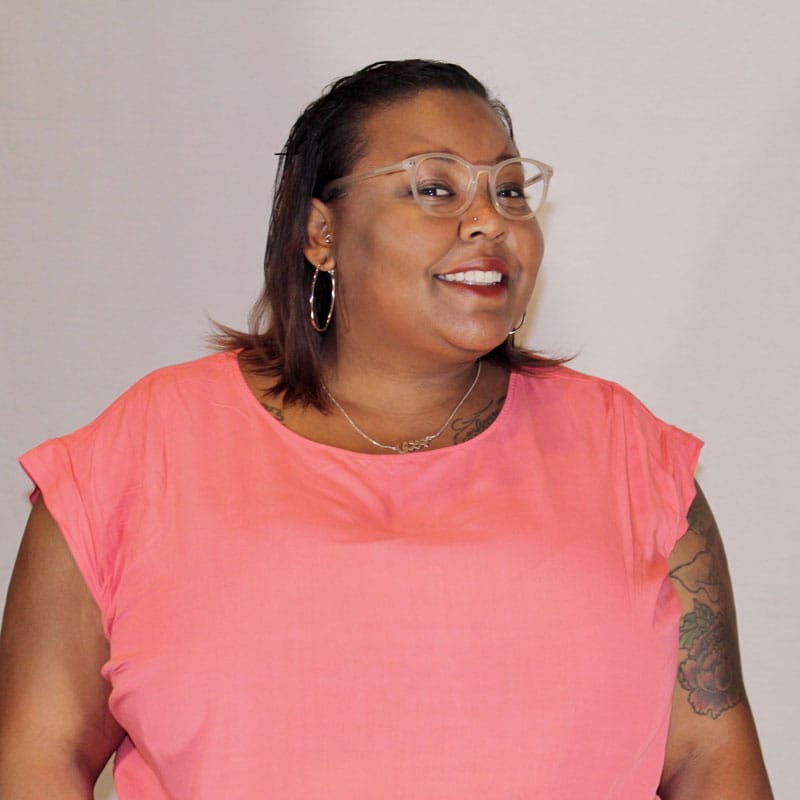If you try this activity with your students, we’d love to see what you do. Share your journey via the #Inspired2Learn hashtag on your preferred social platform.
Discipline: The basic structure of this activity can be applied in just about any discipline.
Age level: This can be adapted to all grade levels.
Time: 10-20 minutes depending on how long you want to give groups to come up with solutions and how many solutions you choose to engage.
This activity challenges students to think about concepts collaboratively in a physical way and completely without words. The challenge level can be raised or lowered depending on the prompts involved and students will surprise you with the range of ways they solve each puzzle you provide.
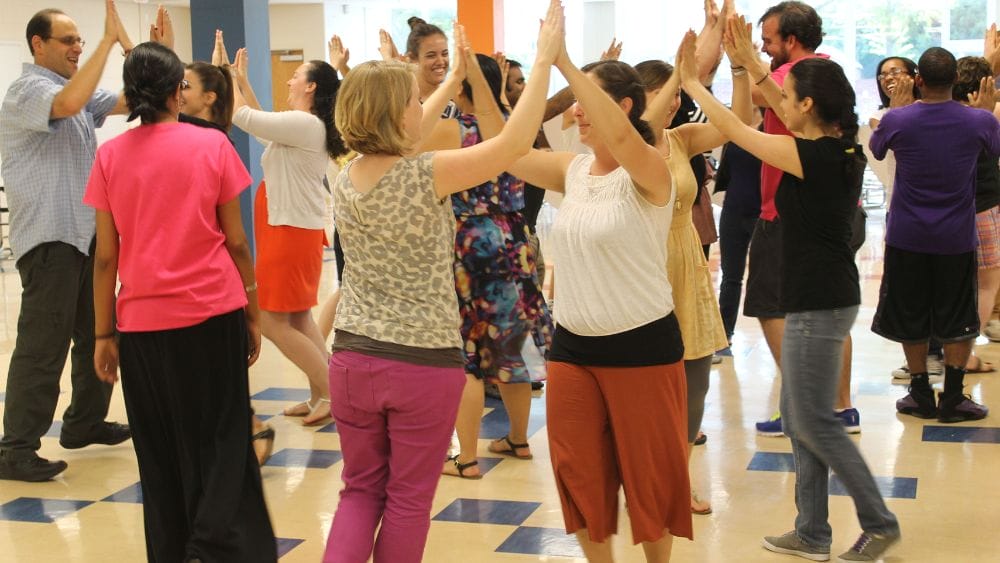
What to do:
Find a large open space where students can walk around freely (outdoors or a gym usually work well).
This game has 4 rules:
- Fill the space.
- Stay in motion.
- Be mindful of your body and others.
- Play in silence.
Instruct the class with these directions:
- Start walking around the space.
- Fill it up.
- As you watch students circulating, you should circulate too and call out what you notice like: There’s a gap over here. There’s a gap over here. Pick up the pace. Move quickly, this exercise is done in silence.
After students have gotten the hang of quickly moving through the space you begin to share these directions:
- When I say go… find three people and form a triangle. Go! (Pause to give every group a chance to make their shape.)
- Keep walking. When I say go… In groups of 2 make a square. Go!
- Keep walking. When I say go… In groups of 4 make a hamburger. Go!
- Keep walking. When I say go… In groups of 3 make the 3 branches of government. Go!
- Keep walking. When I say go… In groups of 5 make a car. Go!
Once students have figured out how this game works with these general prompts you can start making it more complicated with content-specific prompts. Examples include:
- ELA: In groups of 5 make a run-on sentence.
- ELA: In groups of 2 make a scene from the Catcher in the Rye.
- Science: In groups of 4 make a chemical reaction.
- Science: In groups of 5 make the major parts of an animal cell.
- Science: In groups of 3 make an atom.
- Math: In groups of 5 make ¼ x ⅕.
- Math: In groups of 2 75%.
- History: In groups of 3 make the branches of government.
- History: In groups of 4 make the defining characteristic of polytheistic religions.
- History: In groups of 3 make a Roman aqueduct.
Notes to consider:
Shapes can be chosen to push students to think in a particular way, ex. abstractly, about a topic (engineering, government, grammar), about things that are too small to see, etc. You don’t need to know how they will construct the shape / idea – that’s entirely up to their creativity!
When participants are frozen in sculptures, invite them to look around and take note of the other ways in which their peers have solved the challenge.
Standards Addressed by this Activity
Common Core College and Career Readiness Anchor Standards for Language
Knowledge of Language:
CCSS.ELA-LITERACY.CCRA.L.3 Apply knowledge of language to understand how language functions in different contexts, to make effective choices for meaning or style, and to comprehend more fully when reading or listening.
Vocabulary Acquisition and Use:
CCSS.ELA-LITERACY.CCRA.L.4 Determine or clarify the meaning of unknown and multiple-meaning words and phrases by using context clues, analyzing meaningful word parts, and consulting general and specialized reference materials, as appropriate.
CCSS.ELA-LITERACY.CCRA.L.5 Demonstrate understanding of figurative language, word relationships, and nuances in word meanings.
Common Core College and Career Readiness Anchor Standards for Writing
Production and Distribution of Writing:
CCSS.ELA-LITERACY.CCRA.W.6 Use technology, including the Internet, to produce and publish writing and to interact and collaborate with others.
Research to Build and Present Knowledge:
CCSS.ELA-LITERACY.CCRA.W.7 Conduct short as well as more sustained research projects based on focused questions, demonstrating an understanding of the subject under investigation.
CCSS.ELA-LITERACY.CCRA.W.8 Gather relevant information from multiple print and digital sources, assess the credibility and accuracy of each source, and integrate the information while avoiding plagiarism.
CCSS.ELA-LITERACY.CCRA.W.9 Draw evidence from literary or informational texts to support analysis, reflection, and research.
Common Core College and Career Readiness Anchor Standards for Speaking and Listening
Comprehension and Collaboration:
CCSS.ELA-LITERACY.CCRA.SL.1 Prepare for and participate effectively in a range of conversations and collaborations with diverse partners, building on others’ ideas and expressing their own clearly and persuasively.
CCSS.ELA-LITERACY.CCRA.SL.2 Integrate and evaluate information presented in diverse media and formats, including visually, quantitatively, and orally.
CCSS.ELA-LITERACY.CCRA.SL.3 Evaluate a speaker’s point of view, reasoning, and use of evidence and rhetoric.
Common Core College and Career Readiness Anchor Standards for Reading
Key Ideas and Details:
CCSS.ELA-LITERACY.CCRA.R.1 Read closely to determine what the text says explicitly and to make logical inferences from it; cite specific textual evidence when writing or speaking to support conclusions drawn from the text.
Craft and Structure:
CCSS.ELA-LITERACY.CCRA.R.4 Interpret words and phrases as they are used in a text, including determining technical, connotative, and figurative meanings, and analyze how specific word choices shape meaning or tone.
CCSS.ELA-LITERACY.CCRA.R.5 Analyze the structure of texts, including how specific sentences, paragraphs, and larger portions of the text (e.g., a section, chapter, scene, or stanza) relate to each other and the whole.
Integration of Knowledge and Ideas:
CCSS.ELA-LITERACY.CCRA.R.7 Integrate and evaluate content presented in diverse media and formats, including visually and quantitatively, as well as in words.
CCSS.ELA-LITERACY.CCRA.R.8 Delineate and evaluate the argument and specific claims in a text, including the validity of the reasoning as well as the relevance and sufficiency of the evidence.
CCSS.ELA-LITERACY.CCRA.R.9 Analyze how two or more texts address similar themes or topics in order to build knowledge or to compare the approaches the authors take.
College, Career, and Civic Life (C3) Framework for Social Studies State Standards
Dimension 2, Applying Disciplinary Concepts and Tools, provides the backbone for the Inquiry Arc. Working with a robust compelling question and a set of discrete supporting questions, teachers and students determine the kind of content they need in order to develop their inquiries. This process is an artful balancing act because the interplay between Dimensions 1 and 2 is dynamic: students access disciplinary knowledge both to develop questions and to pursue those questions using disciplinary concepts and tools. Children typically begin proposing solutions to compelling questions based on their experiences. Because social studies content is based in human experience, students will have hunches about the questions under study. Rich social studies teaching, however, offers students opportunities to investigate those questions more thoroughly through disciplinary (civic, economic, geographical, or historical) and multi-disciplinary means. Dimension 2 sets forth the conceptual content that defines the disciplines, such as the historian’s habit of describing how the perspectives of people in the present shape their interpretations of the past. This practice, along with the curricular content and the distinctive habits of mind from the other social science disciplines, informs students’ investigations and contributes to an inquiry process for social studies.
Collaborative for Academic, Social, and Emotional Learning Competencies
Responsible decision-making: The abilities to make caring and constructive choices about personal behavior and social interactions across diverse situations. This includes the capacities to consider ethical standards and safety concerns, and to evaluate the benefits and consequences of various actions for personal, social, and collective well-being.
Relationship skills: The abilities to establish and maintain healthy and supportive relationships and to effectively navigate settings with diverse individuals and groups. This includes the capacities to communicate clearly, listen actively, cooperate, work collaboratively to problem solve and negotiate conflict constructively, navigate settings with differing social and cultural demands and opportunities, provide leadership, and seek or offer help when needed.

